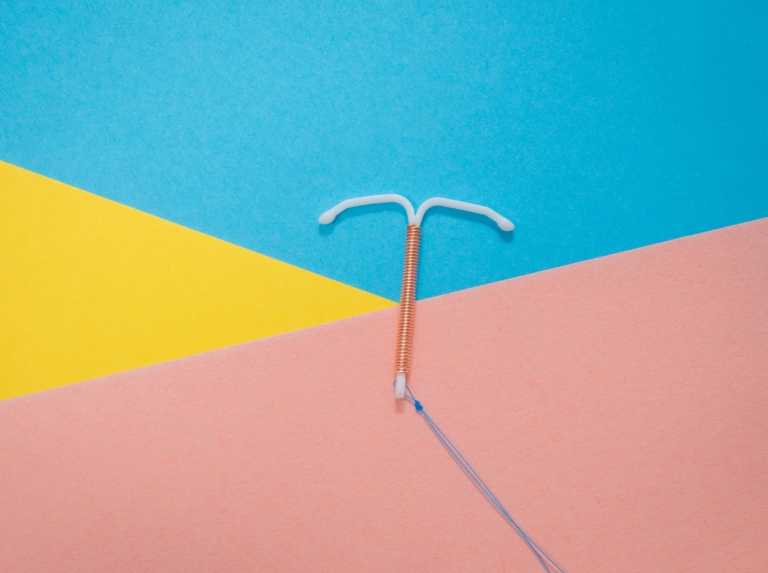I am 25 years old and just recently got off of birth control after being on it for 10 years. The past 3 years were with the Mirena IUD. The decision to have it removed came after I was diagnosed with adrenal PCOS. My DHEA-S levels are too high, and I’m not insulin resistant.
Hair on my face and a “string-of-pearls” on my ovaries
The first noticeable symptom for me was that I have hair growing on my face. A subsequent ultrasound revealed that I have the classic string of pearls on my ovarian tissue. My OB/GYN insisted that I NEEDED to be on birth control or else I would likely end up with endometrial cancer. Yes—he threatened me with the “C word” without even explaining why PCOS could put me at higher risk.
He said I could go off of birth control and take another medicine called Clomid, if I ever wanted to get pregnant or if I wasn’t having any success after a few months. He also wanted to put me on Spironolactone, a blood pressure medicine used off-label to “minimize” the facial hair. Big Pharma must love this guy!
Although I left feeling completely defeated that day, I’m not one to take something like that at face value. In fact, this experience opened Pandoras’s Box for me and led me to do my own investigation. My ovaries looked fine three years ago. Although I didn’t have any evidence yet, part of me believed that hormonal birth control must have contributed to my diagnosis.
Mirena IUD label cites side effects identical to PCOS symptoms
As I began to research, it became harder to accept the PCOS diagnosis. Most of what you read about PCOS is centered around insulin resistance and obesity. However, high DHEA-S levels like I have behave the opposite way and typically affect leaner women.
I remember asking my doctor what type I had and he said, “What do you mean? There’s only one type of PCOS.” I was ultimately able to get the adrenal PCOS clarification.
I requested more blood work to check my thyroid, A1C, glucose levels, liver function, etc. I was not surprised to hear that they all came back NORMAL!
Then, I searched for and found the ridiculously long warning label for Mirena online and the side effects included “cysts on ovaries” and “facial hair,” both of which are fueled by androgens. So, the very signs my doctor was using to diagnose PCOS are actually listed as side effects on the Mirena drug information leaflet.
Getting back to normal after having the Mirena IUD removed
After having the Mirena removed, I started charting my cycles and taking supplements to help balance my hormones naturally. Since getting off of birth control, my cycle returned to normal pretty quickly. My first cycle was 23 days and my second cycle was 27 days. It was VERY normal…a little “too normal” for having PCOS.
I also started listening the Fertility Friday podcast regularly. After listening to the episode with In the Name of the Pill author Mike Gaskins, I reached out to him to see if he knew of any studies that have linked Mirena to PCOS.
He said that, although he wasn’t aware of any studies that demonstrate how much Mirena might increase your risk of developing PCOS, the synthetic progestin that Mirena releases into the uterus causes a reduction in natural progesterone production. The result is estrogen dominance and higher levels of androgens, both of which can contribute to PCOS.
He said that because drug companies fund so much of the science surrounding side effects, it would probably be difficult for anyone to get funding for a study that would definitively link a specific product to an illness.
So, I still don’t have concrete evidence that the Mirena caused my problems, but when I got rid of it, everything got better! My periods returned to normal. My mood, energy levels, and overall quality of life improved dramatically in such a short time. It’s really incredible.
Then, I started to realize the IUD was what caused me to start having recurrent vaginal infections, which led to antibiotics and more money for the doctors and drug companies. I had previously connected the infections to intercourse and was convinced for a while that my body was just incompatible with my partner’s. I know now that is not the case. The opening in the cervix that the IUD creates definitely contributes. I believe that with all my heart.
Women need more information about the Mirena IUD and other forms of birth control
I wish I had someone warn me sooner, but I’m also thankful I didn’t stay on birth control into my 30s. I’m glad I trusted my gut, even when I felt isolated and like I was the only one in the world going through something like this.
I’m sharing my story because I know there are other women out there right now who feel isolated, whose doctors are making them feel like they’re crazy.
You’re not crazy. Get through this. Then, share your story too! That’s how we empower other women who go through this.




